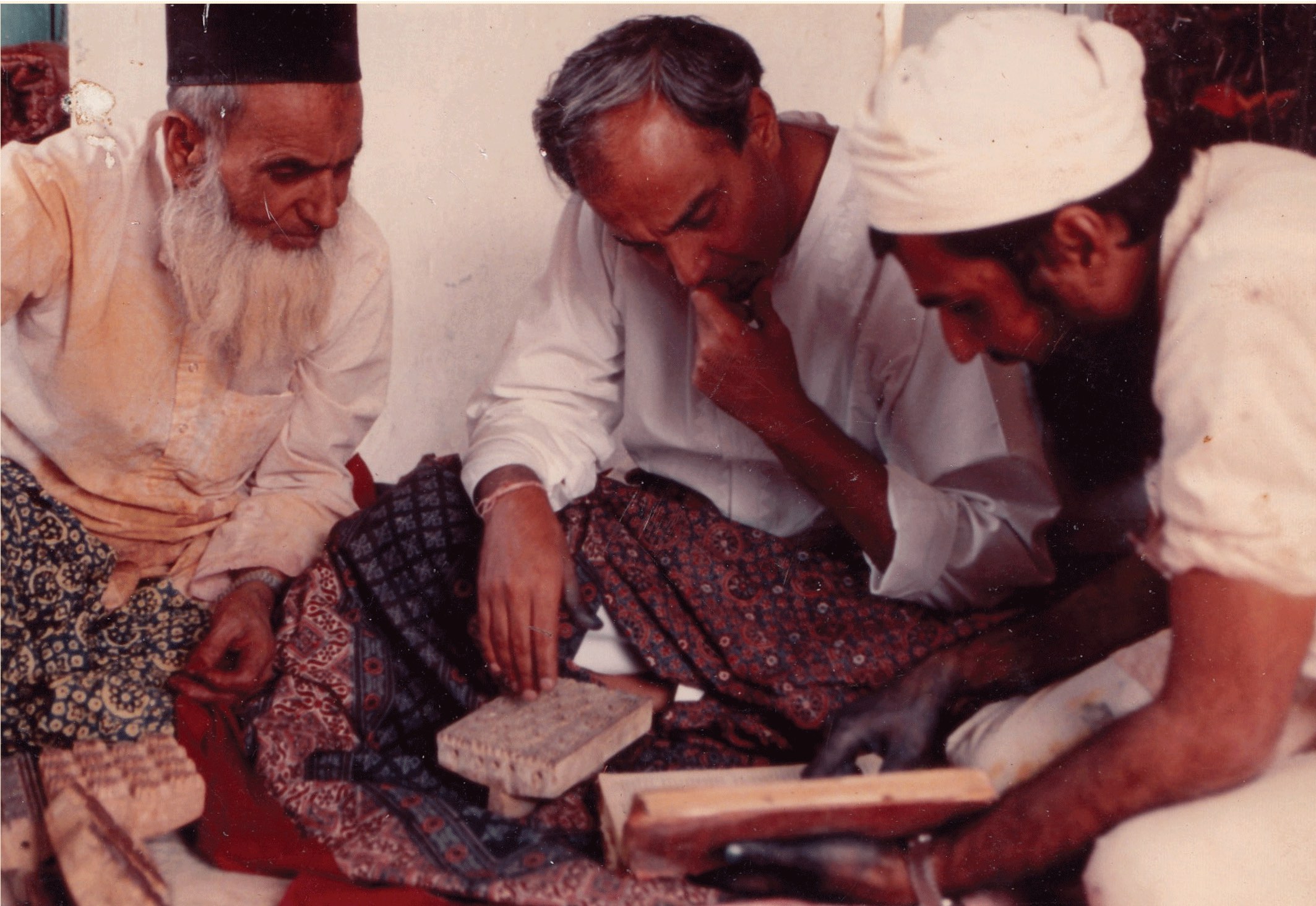
Khatris are perfectionists
The Khatris are an artisan community in Kachchh. Rang utharna aur rang chadana, the art of adding and removing color, has been their work for centuries.
Read full article ⟶
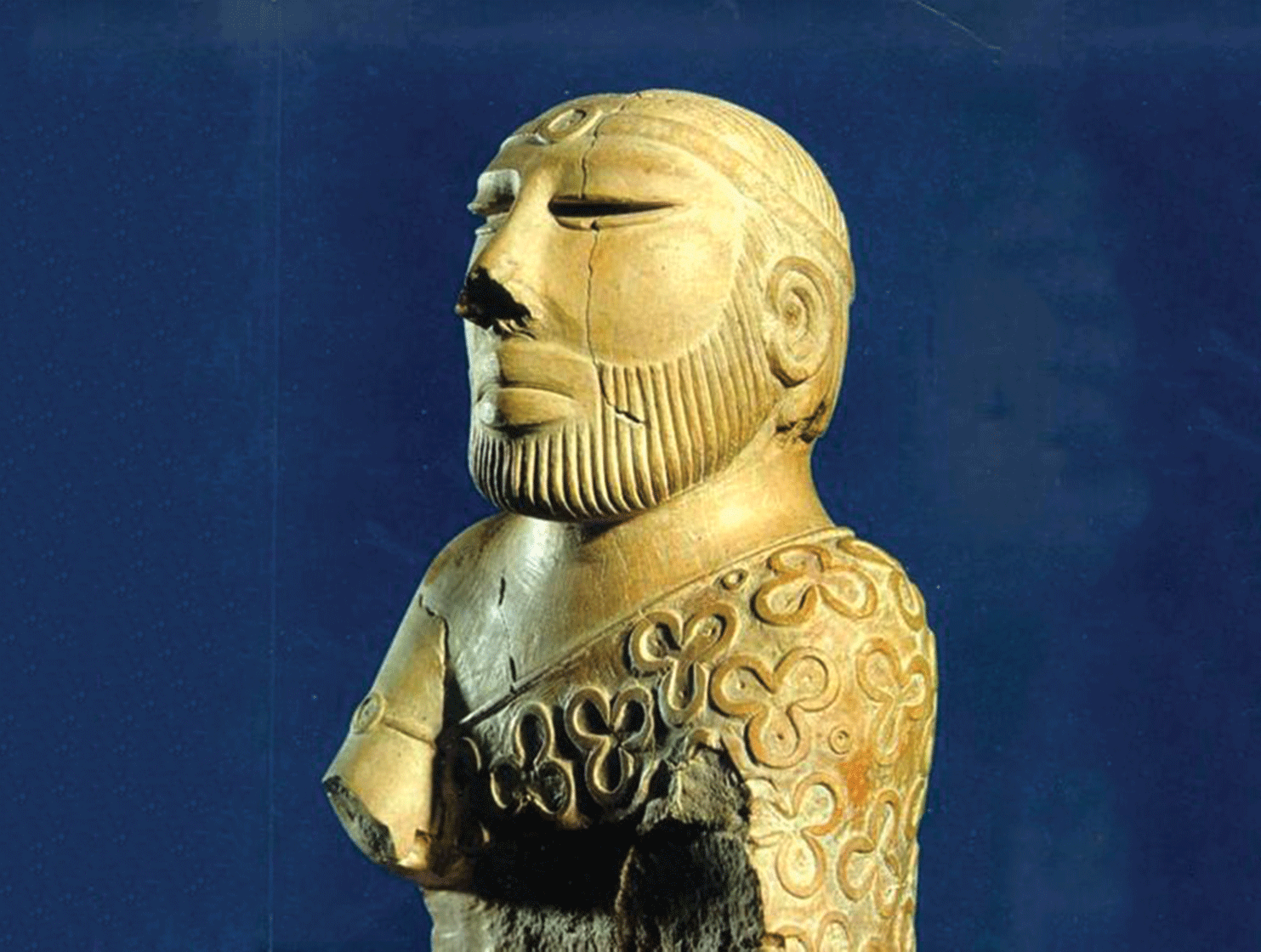
Origins in Sindh
Archaeologists made an exciting discovery at one of the sites of the Indus-Saraswati Harappan civilization. They unearthed 3000 year old strands of cotton dyed with madder (red) at an ancient dyer’s workshop in Mohenjo-Daro.
Read full article ⟶
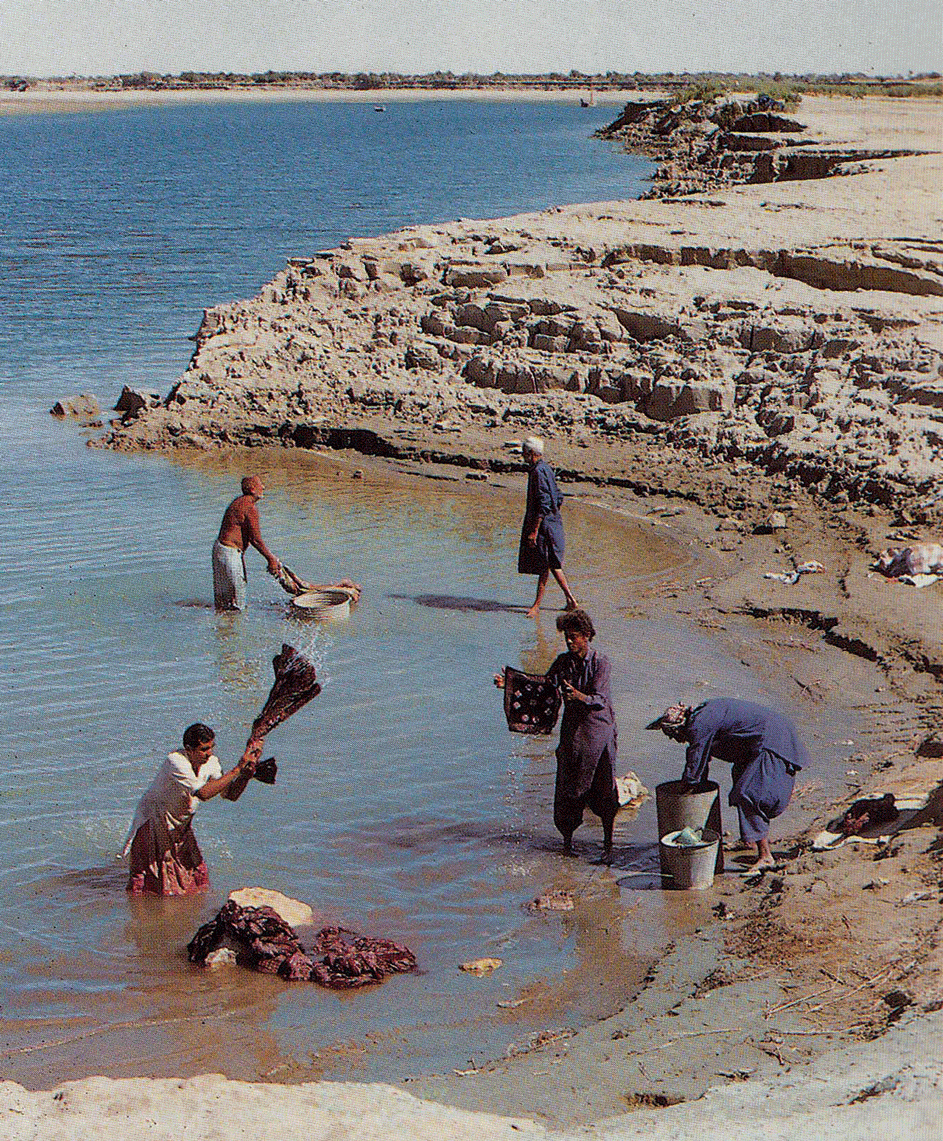
From Sindh to Kachchh
During the 7th century, the Khatris of Sindh were Hindu. It is said that Sindh was invaded by Arabs and forced the people to convert to Islam. Those who converted stayed in Sindh. Those who refused fled to modern-day Kachchh.
Read full article ⟶
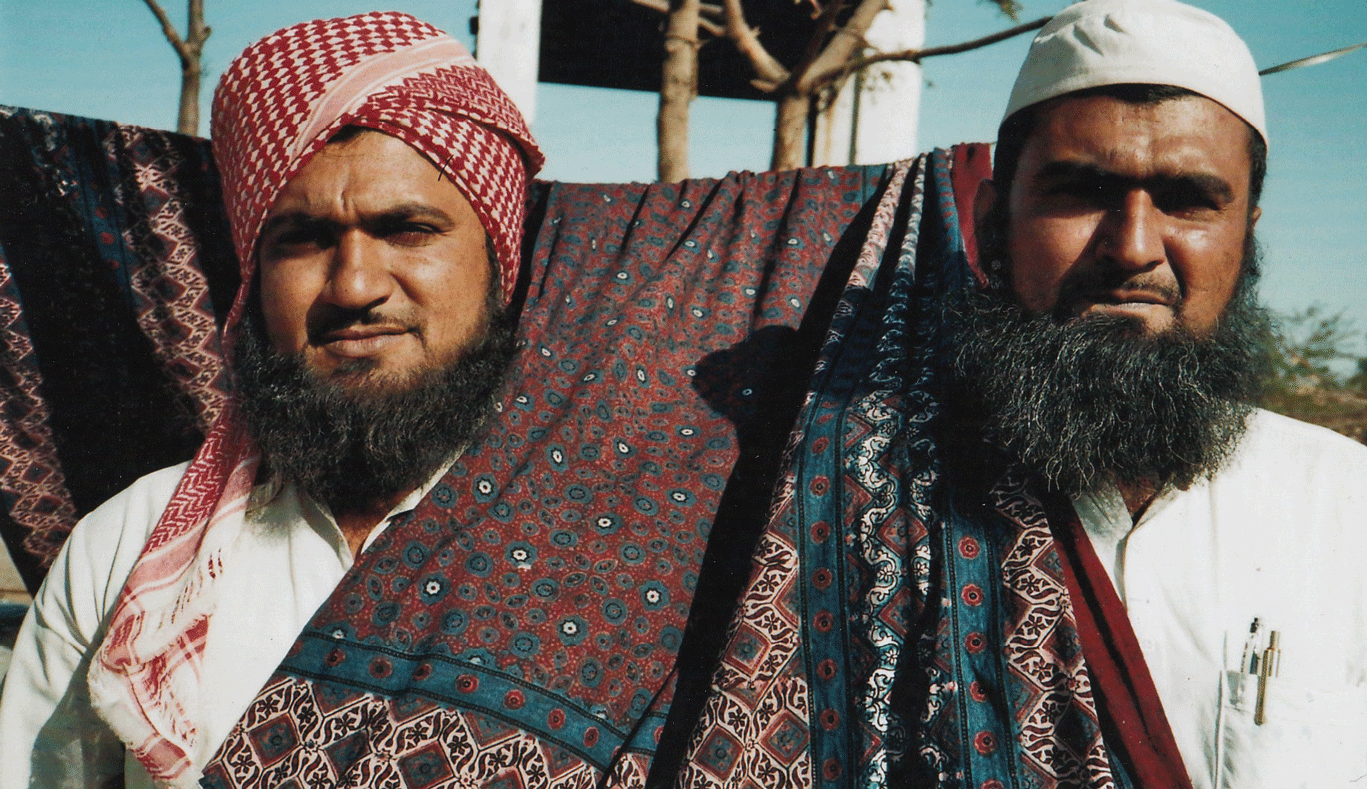
Ajrakh is what we are known for
“Ajrakh is inspired by Brahma, the universe. The blues and the reds of the evening sky and the stars are all inspiration for our cloth. Ajrakh is an Islamic design art with no figures. Everything is crafted using geometrical forms. No other craft’s identity has survived for so long.”
Read full article ⟶

Voices across Kachchh
“The dyeing techniques of Khavda compared to other villages was the same. But the weather and the water was different, and so the shades of the color were different."
Read full article ⟶
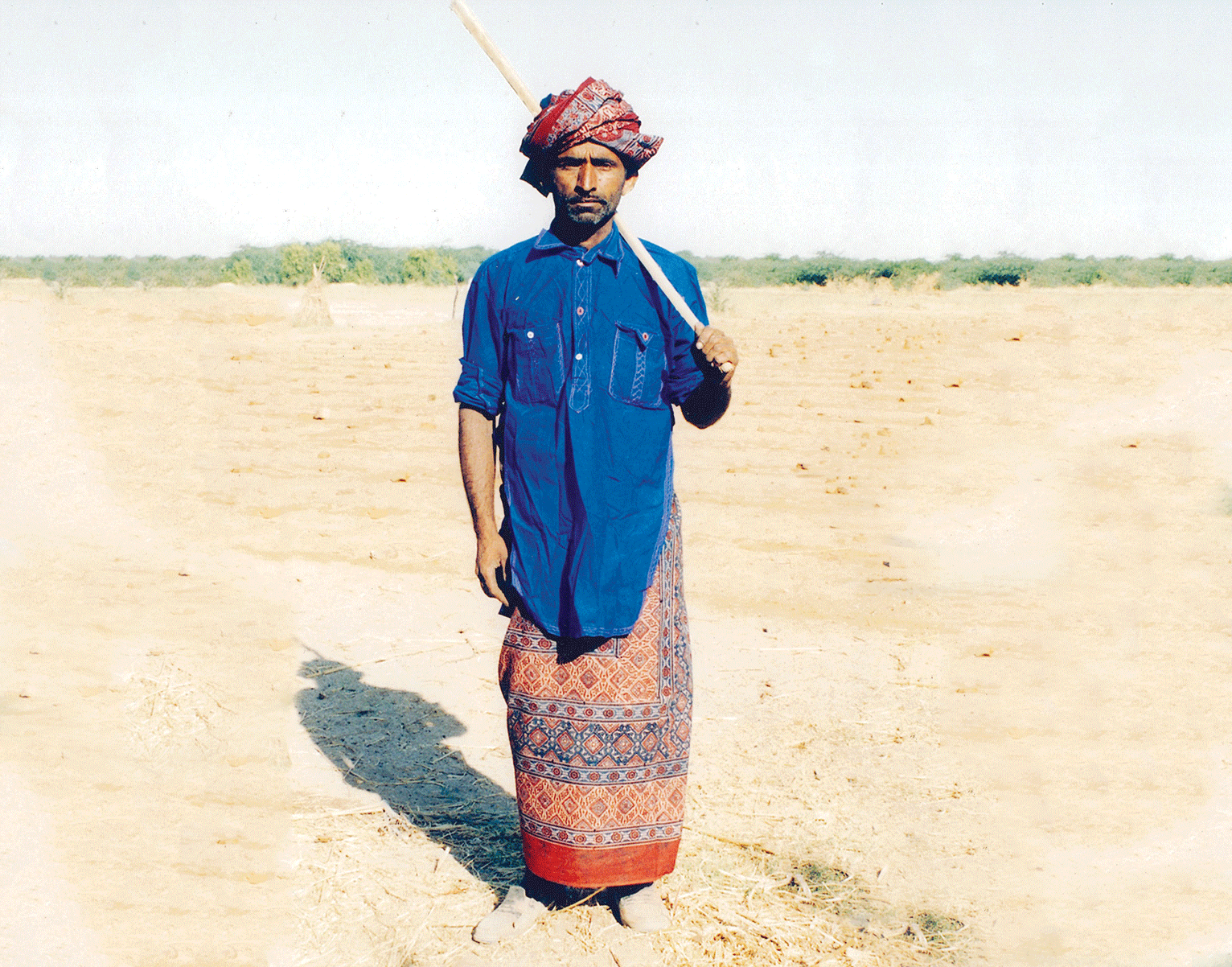
Our cloth is their identity
“There was a carpenter, a weaver, and a potter in every village. The need for cloth in the village was met with the weaver of the village itself. The Khatri people would do the work of the bandhani, the printing, and the coloring according to the needs of each community."
Read full article ⟶
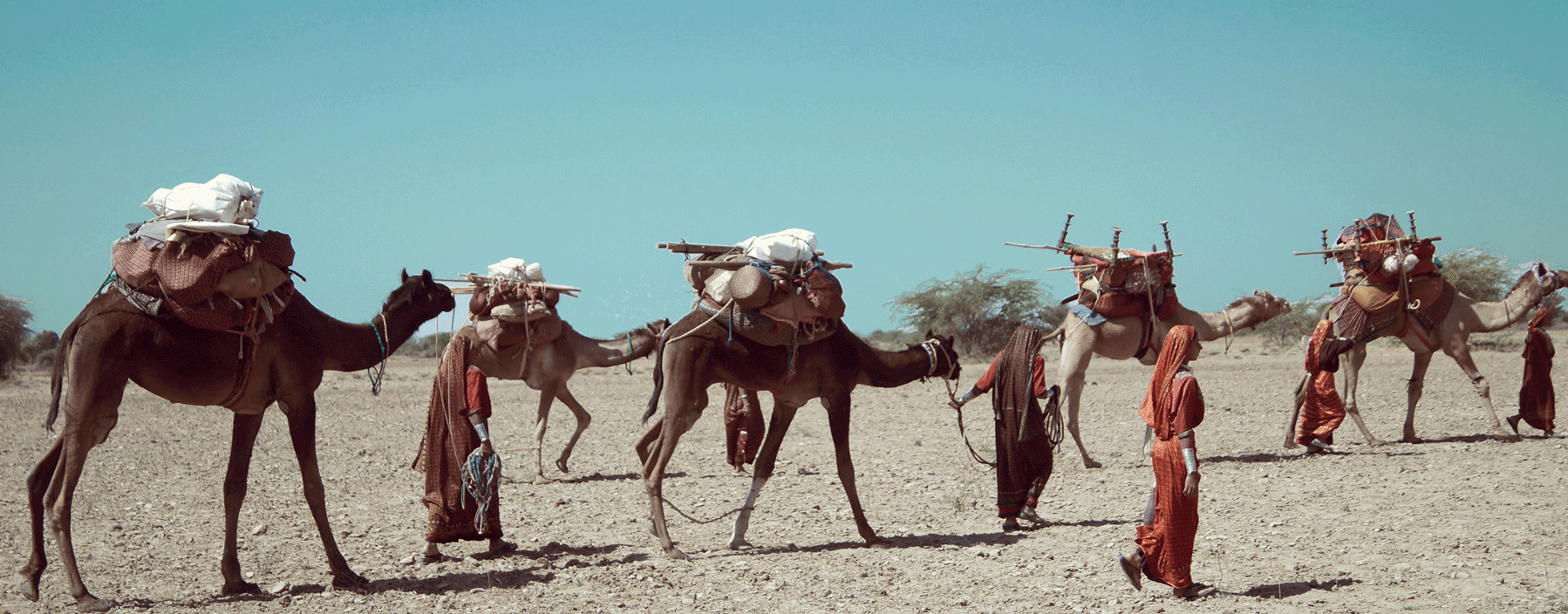
We have walked all over the Banni
“We used to work with the different Maldhari communities. Each had a distinct style, a distinct color palette and design. They never changed styles and we never changed the Ajrakh design. You see, it was a source of identity for them."
Read full article ⟶
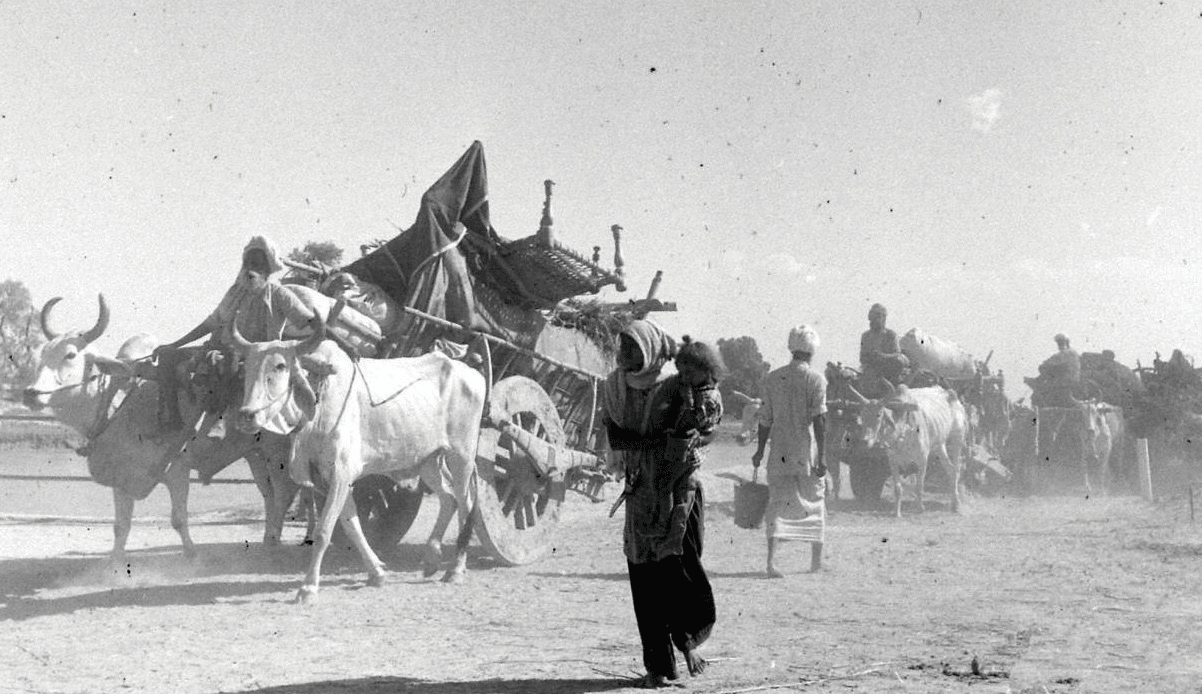
The country divided; we lost our trade routes
In 1947, India and Pakistan were divided. It was no longer possible to cross the border and the trade between East Kachchh and Sindh collapsed completely. Soon, industrialization in India began which affected trade with the local communities who started wearing cloth produced by mills.
Read full article ⟶







